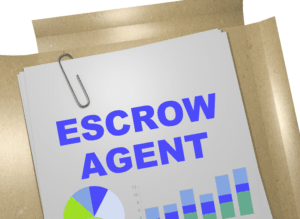
Explore the nuances of double declining balance depreciation, its calculation, and how it compares to other methods. Multiply the straight line depreciation rate by 2 to get the double declining depreciation rate. The DDB method is particularly relevant in industries where assets depreciate rapidly, such as technology or automotive sectors. For example, companies may use DDB for their fleet of vehicles or for high-tech manufacturing equipment, reflecting the rapid loss of value in these assets. For accounting purposes, companies can use any of these methods, provided they align with the underlying usage of the assets.
How can Taxfyle help?
A higher salvage value might encourage refurbishing or resale, while industry trends and technological advancements can affect end-of-life worth. Businesses must consider these factors when estimating salvage values to maximize asset utility. Our solution has the ability to record transactions, which will be automatically posted into the ERP, automating 70% of your account reconciliation process. Save time with automated QuickBooks accounting—ideal for individuals and small businesses.
- In this comprehensive guide, we will explore the Double Declining Balance Method, its formula, examples, applications, and its comparison with other depreciation methods.
- That means you get the biggest tax write-offs in the years right after you’ve purchased vehicles, equipment, tools, real estate, or anything else your business needs to run.
- The salvage value is what you expect to recover at the end of the asset’s useful life.
- Straight-line depreciation is often used for financial reporting purposes, as it provides a simple and consistent way to calculate depreciation expenses over time.
- At the end of an asset’s useful life, the total accumulated depreciation adds up to the same amount under all depreciation methods.
- This front-loading of deductions can free up cash flow, which is often critical for the growth and expansion of small businesses.
- Choosing between the two depends on the nature of the asset and the business’s financial strategy.
Sum-of-the-Years’ Digits Method
So your annual write-offs are more stable over time, which makes income easier to predict. We take monthly bookkeeping off your plate and deliver you your financial statements by the 15th or 20th of each month. In many countries, the Double Declining Balance Method is accepted for tax purposes.

HighRadius Named As A Major Player For Treasury & Risk Management Software By IDC
The double declining balance depreciation method is a form of accelerated depreciation that doubles the regular depreciation approach. It is frequently used to depreciate fixed assets more heavily in the early years, which allows the company to defer income taxes to later years. The double declining balance method of depreciation is a form of accelerated depreciation that allows businesses to write off assets more quickly in the early years of ownership. This method can have significant tax implications, as it affects the timing of expense recognition double declining depreciation and, consequently, the taxable income reported. Depreciation reporting is a critical aspect of tax reporting for businesses, as it affects the calculation of taxable income and, consequently, the tax liability. However, it’s an area fraught with complexities and nuances that can trip up even the most diligent of accountants.
How to Calculate Straight Line Depreciation

These changes should be accounted for in the year they occur, and the depreciation expense should be adjusted accordingly. Choosing between the two depends on the nature of the asset and the business’s financial strategy. Both methods comply with the Generally Accepted Accounting Principles (GAAP) and offer different advantages depending on your financial goals and the asset type. Per Publication 946, the IRS requires most businesses to use the General Depreciation System (GDS) version of the Modified Accelerated Cost Recovery System (MACRS) to calculate depreciation for tax purposes. Your industry, tax strategy and financial trajectory should all factor into your choice of depreciation method. A qualified professional, such as a Certified Public Accountant (CPA), can help you determine which one makes the most sense.

This method is particularly advantageous for assets like technology or vehicles that lose value quickly or gym bookkeeping become obsolete. It also aligns expenses with the asset’s usage and may reduce taxable income in the early years by front-loading depreciation. Depreciation is a concept in accounting that influences financial statements and tax calculations. The double declining balance (DDB) method is notable for its accelerated approach to asset depreciation, impacting a company’s reported earnings and tax liabilities by front-loading depreciation expenses. Choosing the right depreciation method is essential for accurate financial reporting and strategic tax planning.
- HighRadius leverages advanced AI to detect financial anomalies with over 95% accuracy across $10.3T in annual transactions.
- Accumulated depreciation totals $39,200 ($32,000 + $7,200), and the ending book value is $10,800 ($18,000 – $7,200).
- Compared to the sum-of-the-years’ digits method, which also accelerates depreciation but less aggressively, DDB provides a more significant front-loading of depreciation expenses.
- Our Financial Close Software is designed to create detailed month-end close plans with specific close tasks that can be assigned to various accounting professionals, reducing the month-end close time by 30%.
- Founded by Big 4 accountants, Netgain creates solutions for accountants’ biggest challenges.
- Accelerated depreciation is any method of depreciation used for accounting or income tax purposes that allows greater depreciation expenses in the early years of the life of an asset.
With DDB, you depreciate the asset at double the annual rate you would with the straight-line method. Instead of spreading the cost evenly over its life, you front-load the expenses. This reflects that some assets are most useful, and therefore lose value more rapidly, in their initial years.
For example, a $10,000 asset with a five-year life span would be depreciated at 20%—or $2,000—per year using straight-line depreciation. Depreciation is an accounting method used to systematically allocate the cost of a tangible asset over its useful life. This process reflects the asset’s gradual reduction in value due to wear and tear, obsolescence, or usage over time. Rather than expensing the entire cost of a long-lived asset in the year of purchase, depreciation spreads this cost across the periods that benefit from its use.
